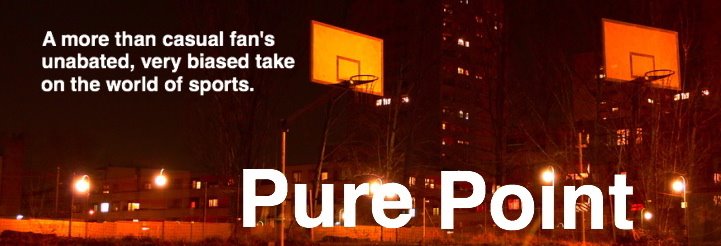Living a Lie will be a weekly installment delving into the annals of the world of fantasy sports and will hopefully run until the end of the baseball season.
By now, most members of competitive leagues and hardy fans know about traditional SABRmetric stats. You talk about BABIP and it's easy enough to comprehend. Throw in a little DIPS, K/BB rate, and GB/FB ratio and you don't lose people. but if you really want to get a leg up on the competition, you're going to want to head on over to The Hardball Times, and get familiar with what I'm going to call the X stats.
Sure, you know about BABIP and FIP (Batting Average per Balls put In Play and Fielding Independent Pitching, respectively for those uninformed), but to more accurately measure the luckiness of a pitcher, you should be looking into xBABIP and xFIP (The x is for Expected).
The notion behind BABIP is simple. If you put a ball into play, either you're going to hit it right to a defender or you are going to find a gap. In the short run, some balls might find more or fewer gaps than average, but in the long run, they should normalize to about the league average (usually .290). For pitchers, a similar concept holds, a batted ball either finds a fielder or it doesn't, and that fact is largely out of the pitcher's control.
The problem behind this is that certain batted balls are more likely to find defenders than others. In short, ground balls and fly balls are much more likely to result in outs than line drives. Therefore if a batter can maximize the number of line drives hit, then his BABIP should be higher than the league average BABIP. Similarly, if a pitcher can minimize his line drives given up, then his BABIP should stay below the league average.
xBABIP is calculated simply by adding 0.12 to the LD%. If this is higher than the batters BABIP, then the batter is unlucky and should expect to get better (opposite for pitchers).
Biggest Differences between BABIP and xBABIP (Batters)
Lance Berkman: .376/.287 (+.089)
Fred Lewis: .357/.284 (+.073)
JD Drew: .366/.295 (+.071)
Carlos Gomez: .354/.283 (+.071)
Dan Uggla: .351/.283 (+.068)
Freddy Sanchez: .267/.372 (-.105)
Adrian Beltre: .222/.322 (-.100)
Nick Swisher: .258/.355 (-.097)
Paul Konerko: .232/.313 (-.081)
Melvin Mora: .245/.322 (-.077)
Ryan Howard: .252/.329 (-.077)
Biggest Differences between BABIP and xBABIP (Pitchers, Min 50 IP)
Ubaldo Jiminez: .336/.286 (+.050)
Randy Johnson: .340/.295 (+.045)
Chris Sampson: .348/.308 (+.040)
Andy Pettite: .340/.301 (+.039)
Andy Sonnastine: .340/.306 (+.034)
Justin Duchscherer: .247/.367 (-.120)
Cole Hamels: .246/.336 (-.090)
Scott Kazmir: .259/.343 (-.084)
Oliver Perez: .267/.335 (-.068)
Paul Byrd: .263/.325 (-.062)
As you can see, the added factor might need to be adjusted as the data is somewhat skewed left for both batters and pitchers. But regardless, you can see who is getting lucky and not.
For a discussion of xFIP, let me direct you to The Fantasy Baseball Generals, who covered that very topic today and in more detail last month.
Thursday, June 12, 2008
Living a Lie: The X Factor
Subscribe to:
Post Comments (Atom)








0 comments:
Post a Comment